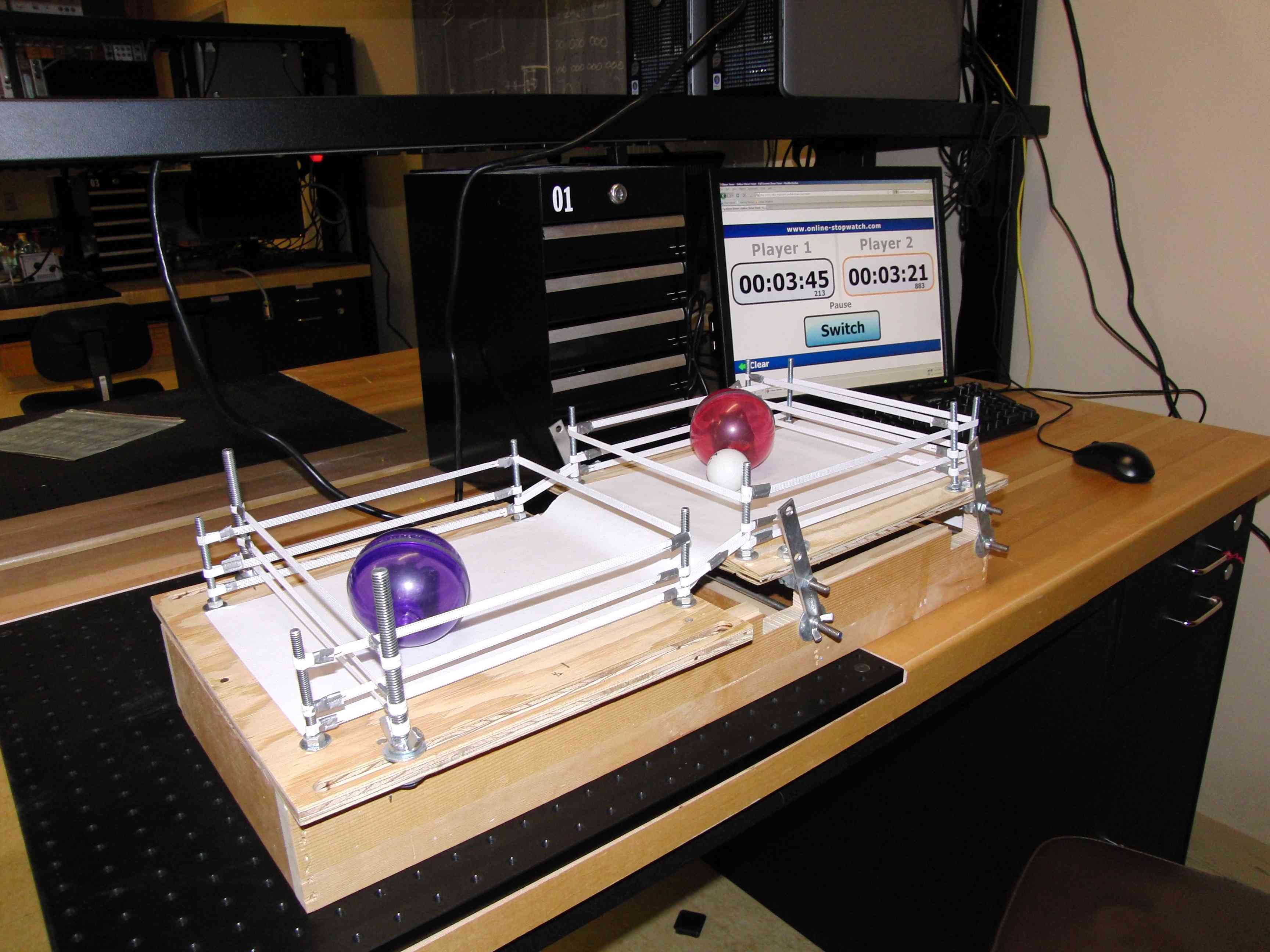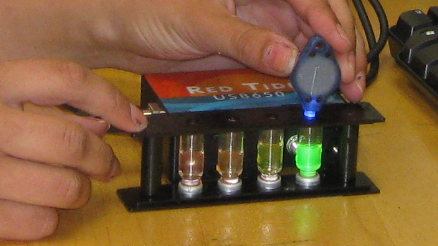



If you are interested in using any of the materials found in this webpage in your own course, please contact Marie Lopez del Puerto: mlpuerto at stthomas.edu
We are currently overhauling the Physics 225: Applications of Modern Physics lab and lecture. Emphasis is on materials science applications of basic quantum mechanics, with particular relevance to electrical engineering majors. Click on "Course Schedule" at left for a sample lecture and laboratory schedule.
We are currently overhauling the Physics 225: Applications of Modern Physics lab and lecture. Emphasis is on materials science applications of basic quantum mechanics, with particular relevance to electrical engineering majors. Click on "Course Schedule" at left for a sample lecture and laboratory schedule.
Laboratory:
The laboratory for the course is closely tied to the class and illustrate complex concepts such as quantized energy levels and probabilities in classical and quantum physics. It follows the theme of “particles in a box.” Laboratories consist of tutorials using PhET simulations, computational modeling using Matlab, and brief, illustrative experiments. Our primary goal in this course is not to develop strong experimental skills, as this is addressed in several other courses in the curriculum, but rather to use experiments to engage students with the material as they test the validity of the computational models they develop. The laboratories feature the interplay between modeling and experiment that is central to the advancement of scientific knowledge, and they give students the theoretical background, mathematical and computational skills they need. The common thread in the laboratories is the “particle in a box” as shown in the following diagram:
Evaluating laboratory achievement
As stated in the AAPT's Goals of the Introductory Physics Laboratory [1], “success in achieving laboratory goals is demonstrated by communicating results.” In Phys 225, students will be introduced to technical writing, both in low-stakes assignments (essay style questions in tutorials and homework and end-of-lab quizzes modeled after Weekly Reports [2]) and in medium-stakes assignments (laboratory summaries). The laboratory portion of the course will be designated "Writing to Learn" in the University of St. Thomas’ Writing Across the Curriculum (WAC) initiative. In "Writing to Learn," short writing exercises are used to help students think through a concept or a problem. Writing will help students engage the material, and it will give them a tool to get a better grasp of the unfamiliar and difficult concepts explored in the course.Click on the links at left to learn more about each laboratory (the links will be updated as the labs are developed), see the course schedule, or look at a sample laboratory summary using Matlab's Publish function.
References
1. American Association of Physics Teachers, “Goals of the Introductory Physics Laboratory,” Am. J. Phys. 66, 6 (1998).2. E. Etkina, "The Use of Weekly Reports in Science Teaching: a Tool for Feedback"
This material is based upon work supported by the National Science Foundation under Grant Number DUE-1140034.
Any opinions, findings, and conclusions or recommendations expressed in this material are those of the author(s) and do not necessarily reflect the views of the National Science Foundation.
